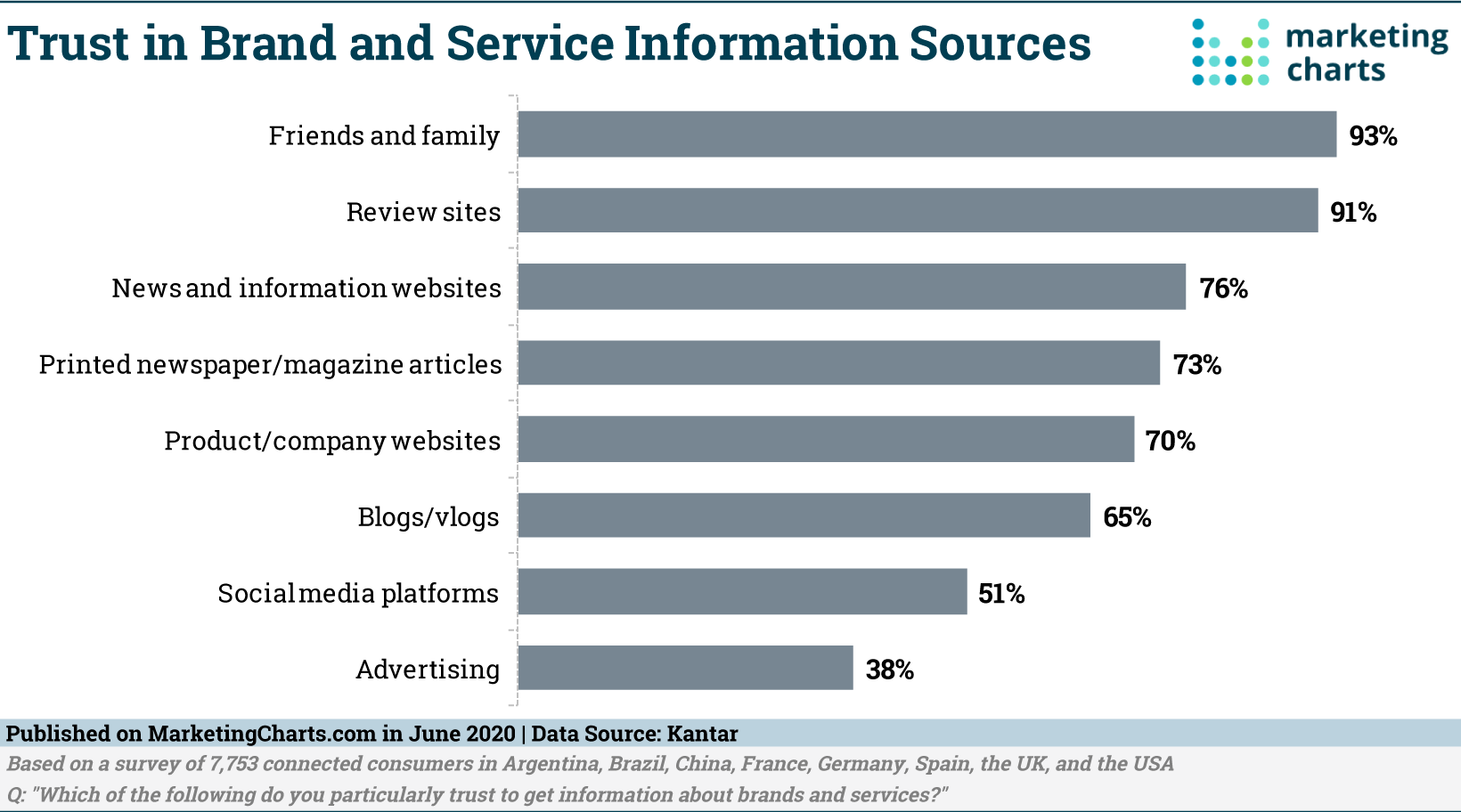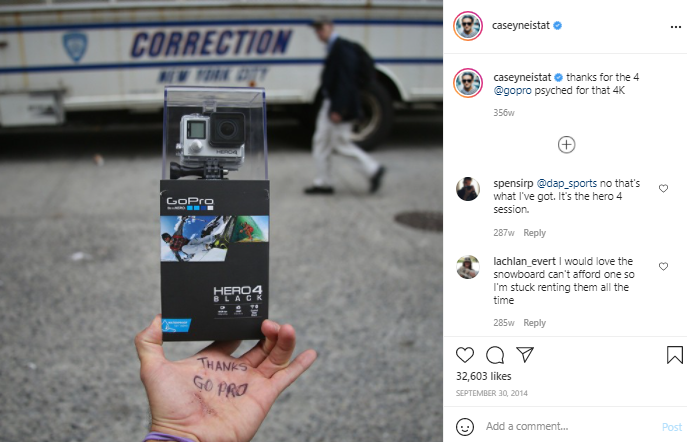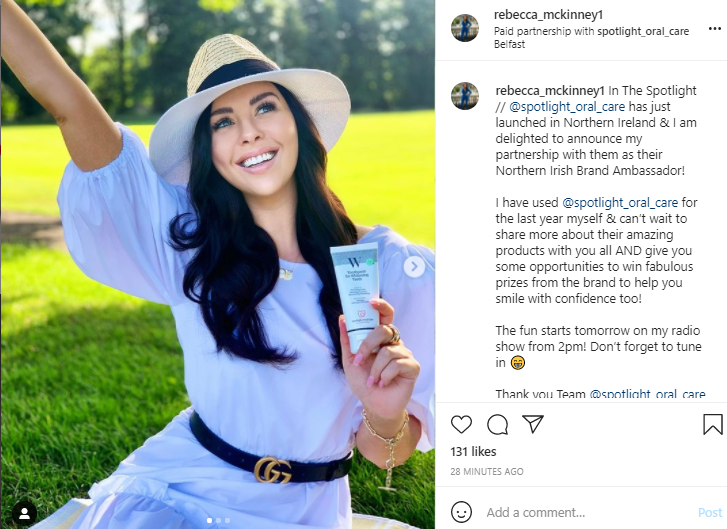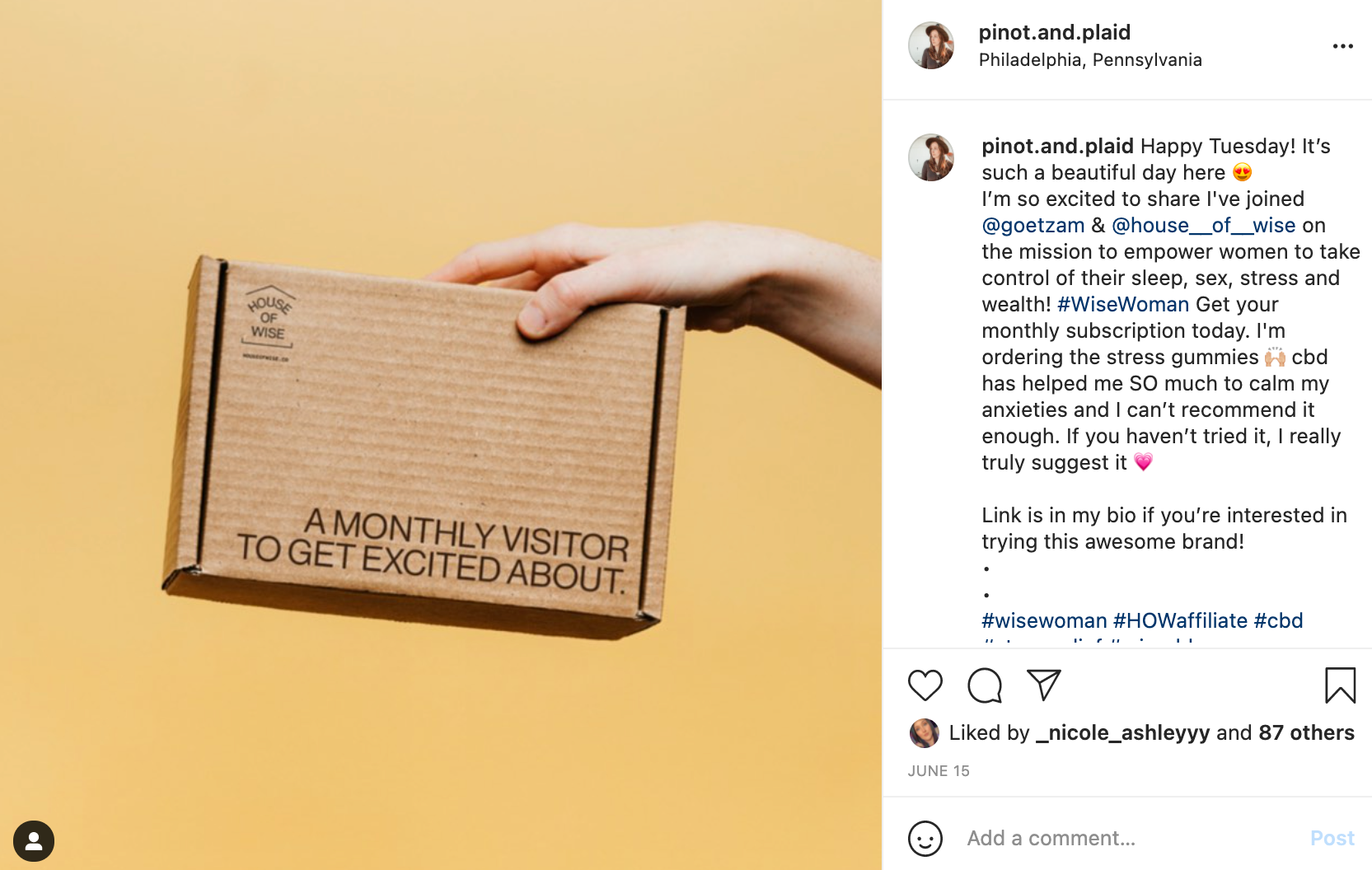Illustration by Jennifer Tapias Derch
Looking for a way to build a loyal customer base and increase your brand awareness? Want to meet your marketing goals faster?
If you answered yes to either question, influencer marketing could be what your business needs. Its global market cap of almost $6 billion in 2020 and compound annual growth rate of 32% clearly illustrate its rapid adoption and future potential.
But does influencer marketing actually generate sales?
In many cases, the answer is a resounding yes: 62% of marketers say they’ve seen an increase in sales when working with influencers on campaigns.
In this guide, you’ll discover how to create your influencer marketing strategy with successful examples of brands.
We’ll cover:
What is influencer marketing?
Influencer marketing is defined as a form of marketing that lets brands leverage the trust and audiences that influencers have built over the years to gain visibility with potential customers.
By getting endorsements from influencers, who are seen as experts and trustworthy sources of information, brands can tap into the social proof that comes as a result and use that to drive sales.
A MediaKix report suggests that 89% of marketers find the ROI from influencer marketing comparable to or better than other marketing channels. What’s more: another report reveals that 75% of marketers have a significant standalone budget dedicated to influencer marketing.
So what exactly is an influencer, then? An influencer is someone who’s built a following around a certain niche and who acts as a brand ambassador. In a way, they’re celebrities within their spaces. They share products with their audiences in exchange for money, free products, or experiences.
Imagine being introduced to a new business by a trusted friend. That’s exactly how customers feel when they get to know your business through an influencer they trust.
Mejuri is one example of a brand finding success with this approach. The fine jewelry brand, founded by Noura Sakkijha in 2013, has grown largely through the power of influencer marketing. Their social media feed is driven by partnerships with influencers and content creators, and as a result, the brand has successfully created an engaged community and a thriving business.
Learn more: Influencer Marketing Statistics 2021: How Influencers Are Shaping Ecommerce Marketing
Benefits of influencer marketing for ecommerce businesses
Whether tapping into the desired market segment or increasing sales, ecommerce brands can leverage influencer marketing to reap benefits such as:
Consumer trust. An influencer’s stamp of approval is a powerful form of social proof. In fact, one survey showed consumers trusted influencers more than brands during the pandemic. Tap into the power of influencers to earn trust by association.
Expanded reach. Influencers invest a lot of time and energy into building their niche audiences. By partnering with an influencer who resonates with your target customers, your reach to potential new shoppers expands exponentially.
High ROI. The high value of earned media means brands can increase brand awareness at an affordable price via influencer partnerships. For example: on average, brands get $4.87 of earned media value for each $1 they spend on Instagram influencers. Not a bad ROI, right?
Learn more: Instagram Influencer Marketing in Ecommerce: Everything You Need to Know
Authentic user-generated content (UGC). Influencers create highly authentic UGC that can be repurposed in a variety of marketing contexts. With approval from influencers, you can repackage their content and use it on your company’s social accounts. This, in turn, helps cut down on the constant need for original content creation in-house.
Improved SEO. In certain contexts (like blog posts, for example) influencers can help generate high-quality backlinks to a brand’s website, thus increasing the company’s organic ranking within search engines.
How to build an influencer marketing strategy
If you’re ready to start building out an influencer marketing strategy, here are the steps to take to get things rolling in the most efficient, strategic way possible.
Set specific goals for influencer marketing
Building out a successful influencer marketing strategy starts with setting expectations and goals any given brand seeks from a creator partnership.
It’s vital to have a game plan for outreach, relationship management, and deliverables from both parties. In this era of influencer marketing in 2021, my tip for ecommerce brands would be to start looking for influencers and creators that are already customers. Nothing is as authentic as someone who already knows and loves your products or service.”
—Savannah Sanchez, social media buyer
Your influencer marketing campaigns should have different goals based on your long-term business objectives.
Those goals may be things like:
Attracting a new market segment
Building links for SEO
Increasing brand awareness
Hyping a new launch
Increasing sales
Keep in mind that specificity is important when setting your goals. Instead of having a goal to generally increase sales, include the percentage increase you want to achieve over a set period of time (e.g., 20% increase in sales during Q2).
After setting your goals, tie them to relevant key performance indicators (KPIs). These will help you understand the success of your influencer marketing campaigns and make data-driven decisions.
Your KPIs will depend on the goals you’ve set. For example: if your goal is to raise brand awareness, your tracking metrics need to be related, so you’d want to look at metrics like engagement rate on a specific social media channel.
Define your ideal influencer partners
Once you’ve set goals, the next step is to clearly define and document the persona of influencers you’re looking to engage.
The influencers you select should:
Align with your brand’s product offerings, vision, mission, and values
Have a sizable following that aligns with your target audience
Maintain a decent engagement rate
Regularly post quality content
You’re not just paying an influencer to post about your product. You’re forming a relationship with a director, a producer, a filmer, the talent, the editor … but all as one person. View your work with creators as a partnership.”
—Nik Sharma, founder of Sharma Brands
Once you have an idea of who you’re looking to connect with, influencer-wise, you can start researching and putting together a shortlist of potential partners and choose from different types of influencer marketing strategies.
1. Influencer Seeding
Influencer seeding is an easy way to create authentic relationships—both with your audience and with influencers. Here’s how it works: A brand sends a product to influencers to try. If the influencer likes it, they create content about it for their social media presence.
You can also take advantage of micro-influencers known within a more specialized niche. In Q1 of 2020, smaller scale influencers showed more effective results when it came to influencer marketing. Today, influencers with 10,000 to 50,000 followers are associated with 40% of all brand collaborations.
Taylor Lagace, Managing Partner of influencer marketing agency Kynship, suggests taking 2% of revenue and investing it in seeding products to influencers with no strings attached.

The reason: even if only 30% of the influencers post about your products, the overall results can be incredibly significant.
2. Outsource to an influencer marketing platform
There are more than 500,000 active influencers on Instagram, so finding and connecting with the right influencers for your ideal audience can be a lot of work. Plus: one wrong collaboration opens your brand to risks (like damaging your brand image or negative backlash). This is why finding and hiring pre-vetted influencers is a wise choice.
Working with an influencer marketing platform like Hashtag Paid helps merchants save time and eliminate uncertainty, as it makes it easy to quickly find, filter, and hire creators, monitor their performance, and manage those relationships within a single dashboard.
At a minimum, influencer marketing platforms lighten your load and take work off your hands. But ideally, you want a platform that helps you find new audiences and generate new revenue.”
—Roger Figueredo, VP of Marketing at hashtagpaid
The benefits include:
Access to a network of influencers curated for your brand
High-quality content for your campaigns
Time saved around admin tasks like completing payments and contracts
More time to focus on tasks that need your immediate attention
3. Affiliate-based partnerships
Another option is to empower your influencer partners to become salespeople by offering an affiliate program. An affiliate program works on a pay-for-performance model, where affiliates get paid by commission on results like sales, clicks, or signups. This way, influencers have buy-in when it comes to promoting your product (and skin in the game).
A Kantar report suggests friends and family remain the most important source of trust in brands, so using this model is a powerful way to supplement or circumvent ever-rising CAC costs as well.

4. Other options
There are several other models for influencer marketing programs:
Cold outreach. If you find an influencer that aligns with your brand, don’t hesitate to reach out. Ask if they’d be interested in a collaboration. More often than not, influencers love to work with brands they connect with.
Work with an agency. Different from outsourcing to an influencer marketing platform where the process is automated, an influencer marketing agency creates a highly personalized strategy for your brand and handles outreach and communication with influencers. Kynship and Kairos Media are examples of influencer marketing agencies that help brands manage influencer-generated content.
Application process. Flip the equation and make it easy for potential collaborators to reach out to you. By having an application form on your website that lets influencers contact you directly, you can filter and select partners that make sense based on your goals.
Track organic UCG. Recognize your existing customers for the influencers they are. Happy customers often post on social media about their experiences, so don’t let those reviews go unnoticed. Instead, track this valuable user-generated content with tools like VideoWise to showcase them on your website and social feeds. Your best influencers may be loyal shoppers who are already raving about you (for free!).
Influencer marketing examples
Now that you understand the basics of an influencer marketing strategy, let’s take a look at some examples of brands that have nailed their influencer marketing efforts.
Daniel Wellington
Daniel Wellington is an accessories brand with a focus on watches. In its early days, the company had a limited marketing budget—so it used influencer seeding to grow.
After sending out watches to influencers with varying audience sizes and having them generate some social content, it next introduced an affiliate model and gave personalized discount codes to influencers for their followers.
Having started with just $15,000 in 2011, the company generated a revenue of $70 million in 2014. That number jumped up to $180 million in 2015. The revenue increase is the snowball effect of building trust and increased brand awareness.
This model continues to perform well for the brand, and today the brand’s hashtag, #danielwellington, has over two million posts on Instagram.

GoPro
GoPro is a tech company manufacturing action cameras and related equipment. It too directs special attention to influencer seeding. In GoPro’s case, it sends out its launch sets to influencers in the vlogging space to have them try different equipment and provide feedback (and often get top-notch content creation as a side benefit).
Launches and influencer seeding also go hand in hand: almost every launch of GoPro is led by influencer seeding. Its goal is to create hype around a launch and build excitement for its new offerings.
“What’s really made GoPro successful to date is finding those tastemakers and those influencers within each market and in specific niches,” says Todd Ballard, the former CMO of GoPro.
GoPro also taps into the UGC factor of influencers’ content. It features GoPro users on its brand Instagram page and highlights their content, thus sharing the spotlight with creators to get them in front of GoPro’s 18.2 million followers. Doing so nurtures the community and encourages users to share their branded content for a chance to be featured.

CASETiFY
CASETiFY is a tech accessories brand specializing in mobile phone covers. It handled the challenge of entering the market as a brand new company with product seeding. By sending out custom cases to influencers, it fueled a content creation engine that over a six-month period generated 1,994 posts and videos and reached over 28,745,815 users.
Scentbird
Scentbird offers monthly perfume subscription boxes that let customers try various perfumes before purchasing a full-sized bottle.
Sergei Gusev, the co-founder of Scentbird, says influencer marketing was a game changer. The brand used influencer marketing to get its first 5,000 monthly paying subscribers and generated $75,000—solely through influencer marketing.
Today, Scentbird still actively sends out its products to YouTube influencers and sponsors some of their videos. YouTube influencers are particularly relevant for Scentbird since the creators take the time to explain the subscription model behind the brand to their audiences. Scentbird has found that when customers understand these benefits in detail, it leads to more conversions.
Spotlight Oral Care
Spotlight Oral Care is an oral health-care brand operating in Ireland, the United Kingdom, and the United States. It is an organization using influencer marketing in different ways depending on the region and the present brand awareness in that region.
Lisa Creaven, the company’s co-founder, says that influencer marketing is a long-term strategy for Spotlight, which values quality versus quantity. “I always try to look at paid media as an aspect of [an influencer’s] contract and work that into every other aspect of the business, whether it’s automation, paid social, etc.,” she says.
The company used to spend 25% of its digital media budget on influencer marketing but, to scale up its marketing efforts, it increased that budget by 50% and hired an influencer marketing agency to reduce the time and effort required to manage the program.
The brand regularly reposts content created by influencers, generating powerful social proof:

House of Wise
Today, over 80% of brands have affiliate programs. House of Wise, a direct-to-consumer CBD brand, thus far has grown solely through its affiliate community of “Wise Women” and “Wise Men”—and it’s seeing success from the model. Recently, the brand raised $2 million in seed funding and continues to forgo paid ads.
How it works: With no recurring requirements, joining costs, or sales targets, affiliates simply get paid based on the number of products they sell. With over 300 affiliates to date, the brand is building a solid customer base through this non-traditional (but much more affordable) model.

Start building your influencer marketing program
Is influencer marketing worth the hype that surrounds it?
Absolutely.
From building trust to increasing your customer base—influencer marketing can deliver results equal to that of many different marketing channels combined.
For help with building your influencer marketing strategy, check out our list of Shopify Plus Certified App Partners where you'll find the perfect marketing solutions for your business.
Influencer Marketing FAQ
What does influencer marketing do?
Influencer marketing is a form of marketing that focuses on using key social media leaders to drive your brand's message to the larger market. Rather than marketing directly to a large group of consumers, you instead inspire, motivate, and activate influencers to do the work for you. Influencers are typically defined as people with a dedicated social following who can influence the buying decisions of others due to their authentic, relationship-based connections with their followers. Influencer marketing is designed to create a ripple effect as the influencers share their experience and knowledge about a product or service with their audience.
What are some influencer marketing examples?
Celebrity Endorsements: Celebrity endorsements have long been used to promote products and services. This type of influencer marketing involves a famous personality promoting a product or service to their followers.
Blogger/Vlogger Collaborations: Collaborations between brands and bloggers or vloggers are a popular form of influencer marketing. For example, a clothing brand may partner with a fashion blogger to promote their products or a cooking channel may partner with a cookware brand to showcase its products.
Social Media Contests: Social media contests are a great way to engage an influencer’s followers and increase brand awareness. For example, a beauty brand might partner with an influencer to host a giveaway. The influencer would promote the giveaway on their social media channels and encourage their followers to enter for a chance to win a prize.
Product Placements: Product placements are another popular form of influencer marketing. This type of collaboration involves an influencer using or mentioning a product or service in their content. For example, an influencer might showcase a product in a YouTube video or post a photo on Instagram of themselves using the product.
How successful is influencer marketing?
Influencer marketing is incredibly successful when done correctly. Studies have found that businesses make an average of $6.50 for every $1 spent on influencer marketing, and that 71% of consumers are more likely to make a purchase based on the recommendation of an influencer.
Is influencer marketing worth it?
Yes, influencer marketing is worth it. Influencer marketing is an effective way to reach a large audience, increase brand awareness and drive sales. It can also help to build relationships with influencers and create engaging content for your target audience.





